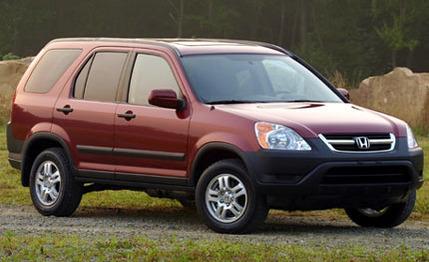
 Road Test
Road Test
In May 1996, I drove a prototype CR-V to the U.S. 500 Indy-car race at Michigan International Speedway. This particular Honda had come straight from Japan, with right-side steering and a dash littered with the sort of symbols a large chicken might inadvertently peck in the dirt. It drew gawkers - including CART aces Bobby Rahal and Jimmy Vasser.
"I'm thinking of getting one just like this," gushed Vasser of my little CR-V.
"Me, too," informed Rahal. "Except mine will be quite a lot nicer."
"Yours is gonna be, what, red with a five-speed manual?" asked Vasser.
"No, no," corrected Rahal, pointing at the steering wheel. "I'm getting one that doesn't belong to the post office."
As it worked out, the CR-V would figure in both drivers' lives, though not mailmen's. It enriched Rahal, who owns a Honda dealership, and it annoyed Vasser, who owns a Toyota dealership. Since then, the CR-V has evolved into a gold mine on wheels - the bestseller among entry-level SUVs in '98, '99, and '00. That dominance might have continued, too, were it not for the arrival of Ford's pesky Escape, which recently whupped the CR-V right out of first place by a heady margin. The Escape, you may recall, also won our dwarf-SUV comparo last March - in which, alas, the CR-V finished fifth. Honda knew this was coming, of course, and has thus been readying a second-generation version, different in detail if not in substance and execution.
For starters, the 2002 CR-V's four-cylinder engine generates 160 horsepower versus the '97 CR-V's wimpy 126 and the '99 CR-V's 146. Plus, it now bats out 162 pound-feet of torque - more torque than horses, you'll notice - at a relatively low 3600 rpm. How? More displacement, up from 2.0 liters to a pot-walloping 2.4. It's now among the largest of modern four-bangers and possessed of a reciprocating mass commonly known to do three things: (1) shake the car on startup, when one of those largish slugs fails briefly to fire; (2) shake the car at idle, especially with the air-conditioning compressor at max drag; and (3) shake the car at all other times.
Honda has somehow avoided all three, in part due to a pair of balance shafts that are integrated within the oil pump; in part due to four beefy engine mounts, two of them liquid-filled; and in part due to engineers who spend their spare time hanging around guys like Rahal and Vasser.
Step-off is no longer a high-rev, clutch-slipping affair. In fact, you can launch in second gear with only 1500 rpm on the clock. Shift from first to second at six grand and you'll bark the tires. There were plenty of 90-degree city turns that, taken in second gear, caused the old engine to lug. Now there's enough torque to negotiate about half of those turns in third. Course, Jimmy Vasser wouldn't.
The second-gen CR-V scoots to 60 mph in 8.4 seconds. That's a second quicker than its forebear and comfortably below the 9.9-second average we logged among those 11 automatic Lilliputian utes last March. It's also 1.8 seconds quicker than an automatic Toyota RAV4, the vehicle that 28.3 percent of CR-V buyers "cross-shop" first. Still, the major payoff is this Honda's newfound perkiness for the first couple of seconds in each of the lower gears, where it's now way happier to lunge and squirt its way into holes in traffic.